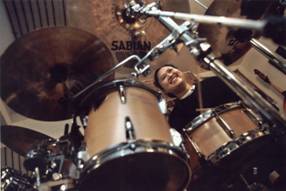Escalating Violence in our Village
April 2013
I wanted to begin this piece by saying, “In the wake of the Newtown shooting,” but it doesn’t seem appropriate. This morning I read about a shooting near Seattle killing five people. A week ago, a bombing at the Boston Marathon stunned the nation and was quickly followed by a shoot-out killing officer and offender alike. Before these events, there was the shooting in Aurora, Colorado. There was the shooting in Tucson, Arizona. There was Virginia Tech. There was Columbine. In our society, we are always in the wake. More aptly, we attend an ongoing wake, mourning those we’ve lost and fearing what may come next.
Of course we are afraid. We’ve watched innocent lives ended in seconds from violence we can’t understand. The immediacy of a gunshot is jarring, and gun control becomes the obvious subject of debate in our homes, our communities, and our government. It’s certainly a worthwhile discussion. The availability of guns in our country is an issue that absolutely needs to be addressed, but in the context of these tragedies, a deeper issue is denied the attention it deserves. Guns are the means by which so much violence is exacted, but that fact can do nothing on its own. The better question is: Why is this violence occurring, and how can we help prevent our children from growing into those who would incite it?
How Can We Help Our Children?
Violence is merely a symptom of a much deeper disease, one that affects not only shooters and victims but countless others.
How much does a person endure before deciding to commit atrocity? It’s a matter of mental health, and, equally importantly, it’s a matter of community health. The phrase, “It takes a village,” is one that we hear with nauseating frequency for a nation so far removed from this ideal. We fall very far short of that mark. By relying exclusively on the relatively impersonal public education system to identify and correct mental health problems in at-risk youth, we create massive cracks for our children to fall through. There are too many children and too few teachers to expect these things to simply sort themselves out. It does indeed take a village, and that means we need to be one.
I do not know the specific events and ideas that led to any individual’s choice to take another life. I do know that this kind of violence is the final scream of frustration from a person who doesn’t feel their voice has been heard. It seems far too easy to say that the solution may simply be to listen, but if we listen well, and listen from the beginning, I think the incidence of these tragedies could decrease significantly. Violence is merely a symptom of a much deeper disease, one that affects not only shooters and victims but countless other people in our country, many of whom go without any attention, not because they don’t need it but because they don’t know how to express their need.
Remedies Do Exist. Are We Looking?
Curing mental illness is as improbable as eradicating guns from our society, but addressing it with compassion and understanding from the outset allows a person to feel supported and engaged in their life and community. Finding positive ways for young people to express their whole selves, even the dark parts, is essential in creating an encouraging, inclusive, more peaceful environment. If a person feels heard and connected, they are far less likely to see themselves as “other” or their peers as “enemy.” They are less likely to take drastic action. In fact, supportive programs like Youth Advancement through Music & Arts (YATMA) don’t just help to pacify things, but they create the space for an at-risk child to grow, achieve, and contribute in ways we tend not to imagine for those who struggle with mental health issues.
The Power of the Arts
 YATMA is moving to Danbury, CT in early May. Its presence in the community will provide a creative outlet for young people to deal with the trauma they’ve experienced in their lives. YATMA’s one-on-one mentoring approach builds skill and confidence in the arts, and it inevitably extends to collaborative efforts between students, their peers, and neighbors. It’s very difficult to describe the weighty effect that well-implemented arts programs can have. I’ve not only seen young people improve their mental health, communication skills, and academic performance through work with the Rossi method, but I’ve seen adults transform from hesitant event attendees to powerful community leaders and facilitators of the arts.
YATMA is moving to Danbury, CT in early May. Its presence in the community will provide a creative outlet for young people to deal with the trauma they’ve experienced in their lives. YATMA’s one-on-one mentoring approach builds skill and confidence in the arts, and it inevitably extends to collaborative efforts between students, their peers, and neighbors. It’s very difficult to describe the weighty effect that well-implemented arts programs can have. I’ve not only seen young people improve their mental health, communication skills, and academic performance through work with the Rossi method, but I’ve seen adults transform from hesitant event attendees to powerful community leaders and facilitators of the arts.
It’s never too late to reduce risk for individuals, but it does take a village. If we want change, we need to be that village, welcoming, supporting, and following the example of organizations like YATMA, which offer simple yet profound solutions to unheard voices.
This post was published in 2013. YATMA, which was the ground in which Bill Rossi and like-minded artists and musicians served over 2,500 vulnerable youth and adults, has now closed. Its success lives on in the strength and creativity of its former students.




